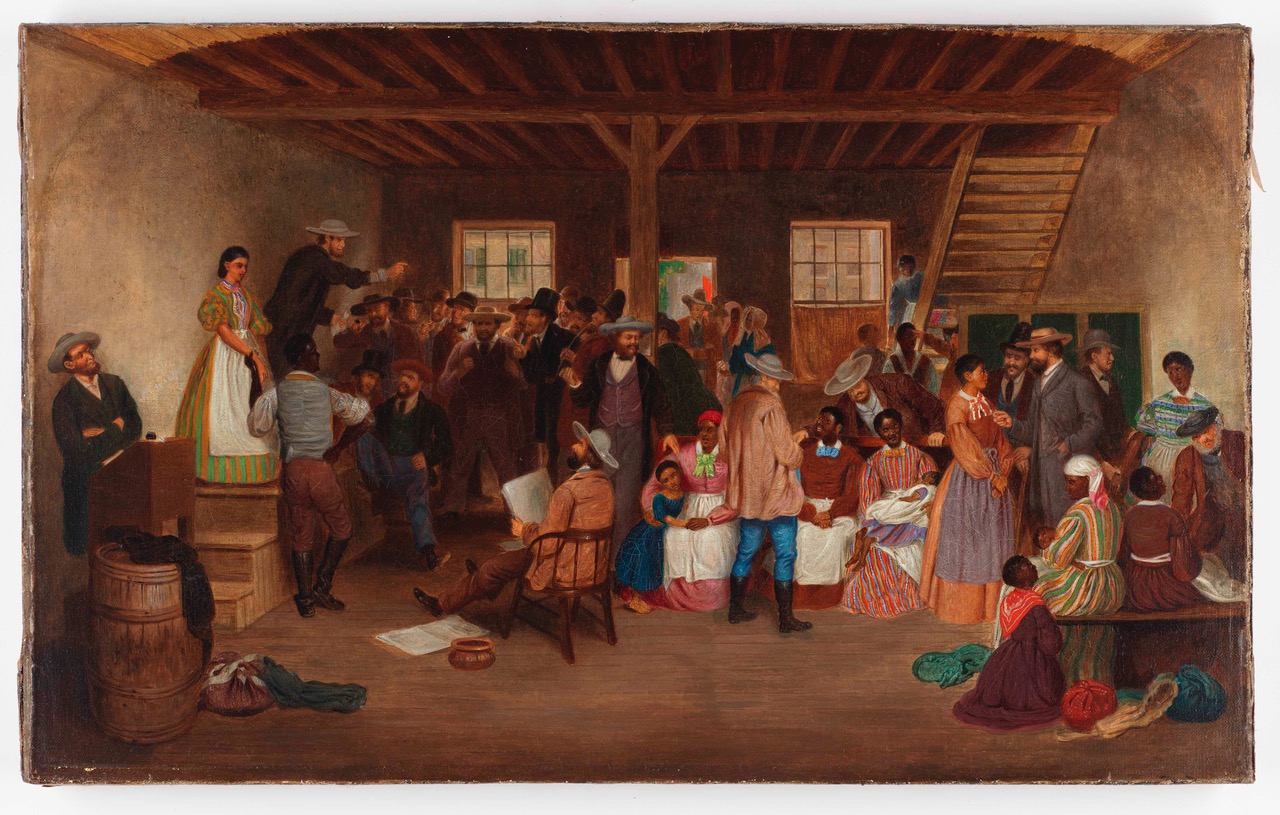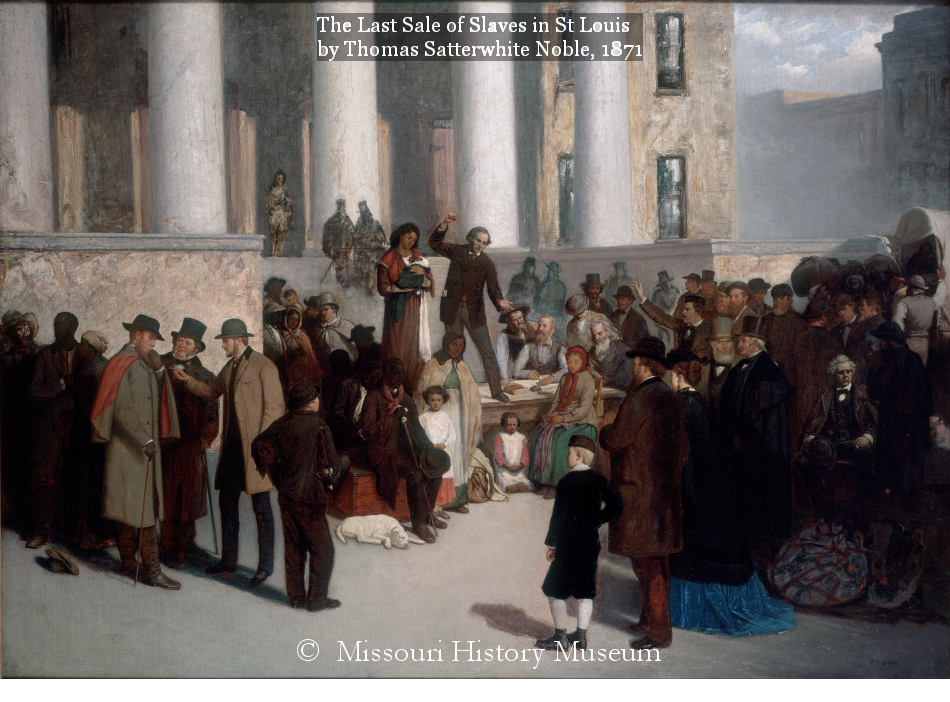
Passionate Abolitionist and
Witness to the American Civil War


Passionate Abolitionist and
Witness to the American Civil War

Here is a good example of Thomas Jackson at his most passionate and eloquent. He contrasts the "free America" he had been taught to admire as a boy in England with his feelings when, now living in America, he witnessed a slave market at first hand. His disillusionment and disgust is powerfully communicated and appears to be the source of his commitment to the abolition of slavery that continued throughout his life.
Philadelphia, August 12th, 1862
Fifty years ago my father used to take me on his knee and tell me about America — the United States of America. He described it as a far-off land, “flowing with milk and honey, where every man sat under his vine and under his fig tree, and none to make him afraid.” He praised the Government as the only one then free, and based upon the sovereignty of whole people administered for the good and protection of all. He filled my boyish fancy with such glowing ideas of free America, that I determined to go to that highly privileged and prosperous country when I became a man and my own master.
More than 33 years ago I emigrated to America, and settled in one of the most prosperous of the free States. I was kindly welcomed and found many good men and kind friends. I had to work hard, but I soon had a good home, acquired property, and was prosperous and happy. I saw nothing of slavery.
My father had never mentioned such a thing as American slavery. I never dreamed that such a thing was possible as liberty and slavery existing together under just laws.
I was too simple to entertain such an idea. Never thought such a thing could be; do not now think it can be; know now it cannot be.
But about 12 years after I came to America I had occasion to visit a large Southern city on business. The day after my arrival there I saw a crowd of men in one of the principal streets. On going to see what brought them together, I found an auction of slaves in full operation.
I suppose I saw 15 or 20 sold, of all shades of colour from black to three-quarters white. Then they brought out a good-looking, well-dressed, modest and the most interesting young woman, about 23 or 24 years old, and, to all appearances to me, as white as my own English wife. She had a little daughter about three years old by her side, and a beautiful babe of about a year old in her arms, both, for all I could see, as white as my own children at home.
The common law of England makes the status of the child to depend upon the status of the father: but about 1740 the Legislature is on the American slave colonies reversed the law, and made the status of the child dependent upon the status of the mother. Ever since then the offspring of slave mothers have been whitening, until the very small trace of negro blood is not perceivable in many. So this woman and her little ones were placed on the auction block and put up for public sale to the highest bidder.
The auctioneer began — “Gentlemen, I have a very interesting lot to offer you now. This woman is a good housekeeper, good laundress, a good sower and quick with her needle, a good and careful nurse, kind to children, good tempered, trustworthy, and a very confidential servant capable of taking the whole charge of a gentleman’s household. She is not being used to hard work, but she is young and a very valuable breeder, she has to fine healthy children. Gentlemen, gave me a bid. How much for the lot?”
The “Gentlemen” were a queer looking crowd, most of them a hard featured set of dirty mouthed, rum-drinking tobacco chewers, seemingly not half as white as their victims, gloated over the poor woman and her babes they were bidding for. And there stood this hapless daughter of slavery — with 1/32nd or 64th part of negro blood in her veins, which, in America increases feminine loveliness by adding largely to its softness and delicacy — there she stood under the rude gaze of these of these “gentlemen” — these slave loving champions of liberty, liable to become the property, and entirely subject to the power and the lust of the grossest brute among them, if he bid high enough!
There stood this young American mother with her mild large, dark, tearful eyes and most interesting features, evidently feeling her degradation, the very picture of desolation and despair, pressing her beautiful babe to her bosom almost convulsively, her little daughter clinging to her dress in alarmed wonderment at the strange scene she was for the first time a part of. There stood this most melancholy spectacle of democratic barbarism ever witnessed in a society claiming to be civilized — there they stood and the bidding and the gloating went on!
“Great God!” Thought I, “Is this the land of civilization and just laws? Is this “the land of the free and the home of the brave?”
There are times of astonishment when the human mind crowds the thoughts of long periods back into a few passing moments. I looked with appalled amazement on that horrible site only a few minutes; but in those few minutes I saw that my 30 years dream of American liberty was just that, only a dream! I walked away with a heavy heart, a wiser and much sadder man than I was before.
That was 20 years ago. I have lived in America ever since; but from that hour on, I have continued to look upon slavery with a perfect loathing.
The barkeeper of the hotel I stayed at knew the owner of this poor young woman, and said that the owner was the father of her children. He had become tired of her, wished a change, and all the favour he showed her was to send her and his two children to auction, to be sold together in one lot, and not separated while he owned them.
When a British aristocrat seduces a girl of lower degree if he does not marry her, he feels in honour bound to provide for her and his children; but the Americans slavocrat is not influenced by any such fine feelings. The honourable and paternal are never thought of; the pecuniary alone entirely predominates; and American laws and institutions encourage him to send his children and their mother to the slave mart, and put their price in his pocket!
These are the men who, having ruled free America for fourscore years, because they lost an election, have rebelled, and now in the field with four hundred thousand men to upset the Government; and the European aristocracy and cotton lords are sympathizing with them in an attempt to establish a nation founded entirely upon the infernal and revolting institution of human slavery.
But slavery must perish, with all its abettors.
Its Northern tolerators and its Southern defenders are slaying each other by thousands, and the wrong done to the poor mother and her lovely little ones is now being amply avenged. Richmond, where I saw her, is now on one big hospital of wounded and dying men. Thousands and tens of thousands have fallen in battle near there. The country in all directions is being desolated by fire and sword and shell.
Such are the historical retributions of Providence! Such are the dealings of almighty and eternal justice!
Read the whole unedited letter published in full in an English Newspaper. See Aug 12, 1862 Letter, published 9-11-1862.

Slave auction in Richmond.
Like Thomas Jackson, this English painter was appalled to witness American slave markets and when he returned home, not only did he complete this painting based upon his sketches from life but he too wrote a detailed letter of censure which was published in his local newspaper.
Source: Image courtesty of the Virginia Historical Society

A sale on the steps of the old courthouse of St Louis.
Supposedly on January 1, 1861 everyone in the crowd had agreed to take a stand to end slavery and so no one bid over $3.00, thus making the whole auction uneconomical.
The artist’s father employed slaves in his cotton and hemp-growing business and so he would have been very familiar with treating people as property. As a young man he left the family plantation to study art in Paris but returned to enlist in the Confederate army. After the war, he moved to New York and produced several paintings with an abolitionist message. Here the viewer’s attention is focused on the innocent child in white and the mother with an infant in her arms.
Source: Image and notes courtesy Missouri History Museum